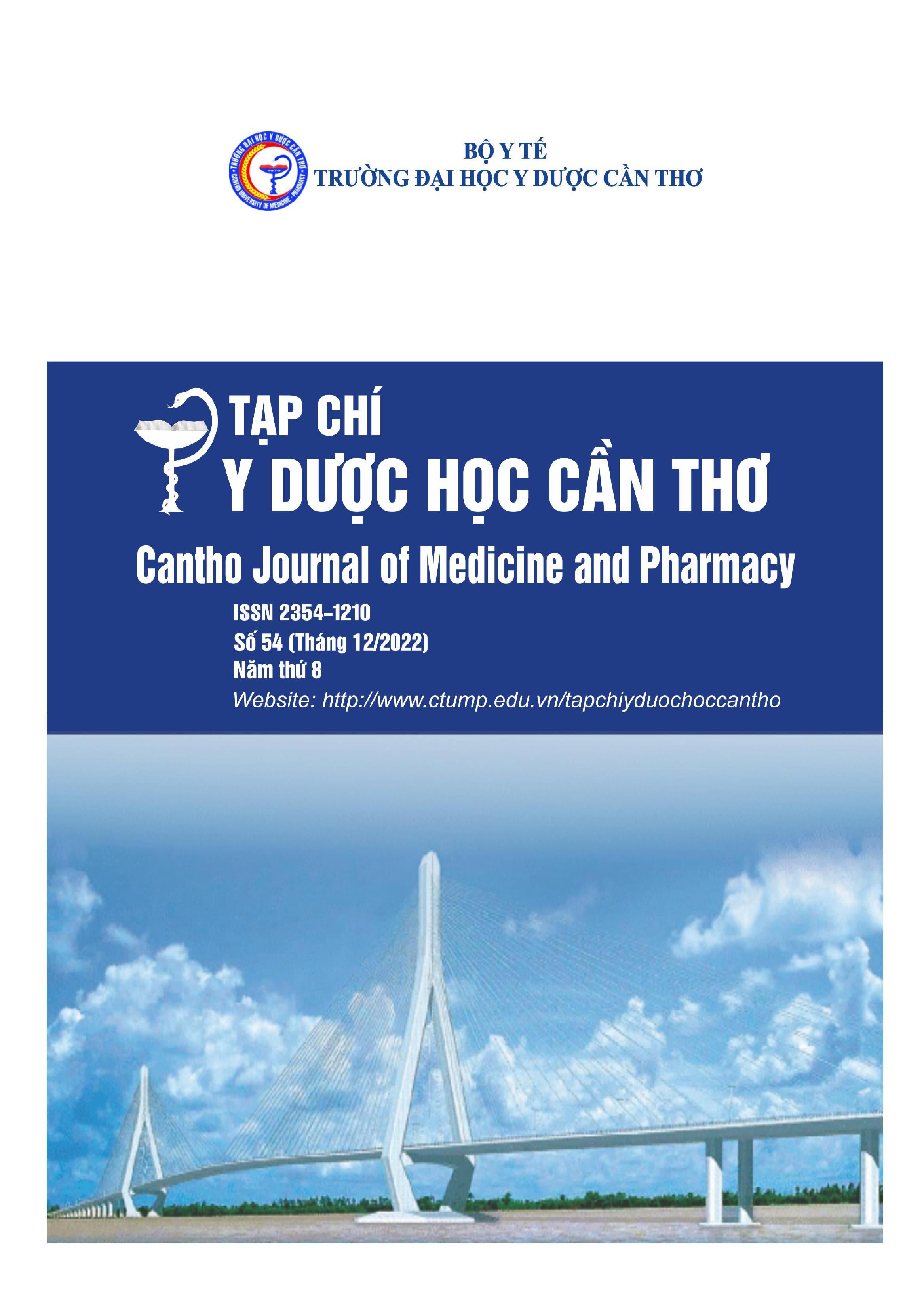STUDY ON THE USE OF NON-STEROIDAL ANTI-INFLAMMATORY DRUGS IN THE TREATMENT OF SOME MUSCULOSKELETAL DISEASES AND ASSESSMENT OF RATIONALITY ACCORDING TO THE LEVEL OF RISK ON GASTROINTESTINAL - CARDIOVASCULAR AT CAN THO UNIVERSITY OF MEDICINE AND PHARMACY
Main Article Content
Abstract
Background: Non-steroidal anti-inflammatory drugs (NSAIDs) are commonly used drug groups in musculoskeletal diseases. However, this group of drugs causes many adverse reactions, especially in the digestive and cardiovascular systems, so it should be given due attention. Objectives: Determining the ratio of using NSAIDs in treating some musculoskeletal diseases, assessing the level of risk and rationality of NSAIDs on gastrointestinal - cardiovascular. Materials and methods: A cross-sectional descriptive study was performed on 386 musculoskeletal patients prescribed to use at least one NSAIDs in general internal medicine and orthopedic clinics at the Can Tho University of Medicine and Pharmacy Hospital from January 2021 to December 2021. Patients were assessed for gastrointestinal-cardiovascular risk and the rationality of using NSAIDs according to the Quebec Medical Council's protocol. Results: The rate of using selective NSAIDs on COX-2 is 93%, of which celecoxib is the most prescribed drug (64.2%). Patients with moderate to high gastrointestinal risk are 63.5%. The rate of patients with low to moderate cardiovascular risk is 71.2%, and high cardiovascular risk is 28.8%. The rate of the reasonable ratio of NSAIDs prescription to gastrointestinal risk is 62.7%, cardiovascular is 73.8%, and appropriate for both gastrointestinal and cardiovascular risk is 55.4%. Conclusion: Using NSAIDs in musculoskeletal patients accounts for a high rate. The use of NSAIDs in the study is relatively consistent. However, more attention should be paid to assessing risk factors for patients before taking the drug.
Article Details
Keywords
Non-steroidal anti-inflammatory drugs, NSAIDs, gastrointestinal risk, cardiovascular risk
References
2. Nguyễn Thị Xuân Hương (2019), “Khảo sát tình hình sử dụng thuốc kháng viêm không steorid (NSAIDs) trên bệnh nhân có nguy cơ loét dạ dày và tim mạch điều trị ngoại trú tại Bệnh viện Đa khoa tỉnh Bình Dương”, Luận văn thạc sĩ, Trường Đại học Y Dược TP.Hồ Chí Minh.
3. Vũ Thị Thanh Thủy (2012), Chẩn đoán và điều trị các bệnh cơ xương khớp thường gặp, Nhà xuất bản Y học, Bệnh viện Bạch Mai.
4. Lanas Angel, Jesús Tornero, José Luis Zamorano (2010), “Assessment of gastrointestinal and cardiovascular risk in patients with osteoarthritis who require NSAIDs: the LOGICA study Angel”, Annals of the rheumatic disease, 69(8), pp.1453-1458.
5. McGettigan P., Henry D. (2013), “Use of Non-Steroidal Anti-Inflammatory drugs That Elevate Cardiovascular Risk: An Examination of Sales and Essential Medicines Lists in Low, Middle and High-Income Countries”, PLOS Medicine, 10(2), pp.1-6.
6. Québec (2010), “Algorithme d’utilisation des anti-inflammatoires non steroidien (AINS)”.
7. Singh G., Triadafilopoulos G. (1999), “Epidemiology of NSAIDs induced gastrointestinal complications”, J Rheumatol Suppl., 56, pp.18-24.
8. Warner T. D., et al. (1999), “Nonsteroid drug selectivities for cyclo-oxygenase-1 rather than cyclo-oxygenase-2 are associated with human gastrointestinal toxicity: a full in vitro analysis”, Proceedings of the National Academy of Sciences, 96(13), pp.7563-7568.


